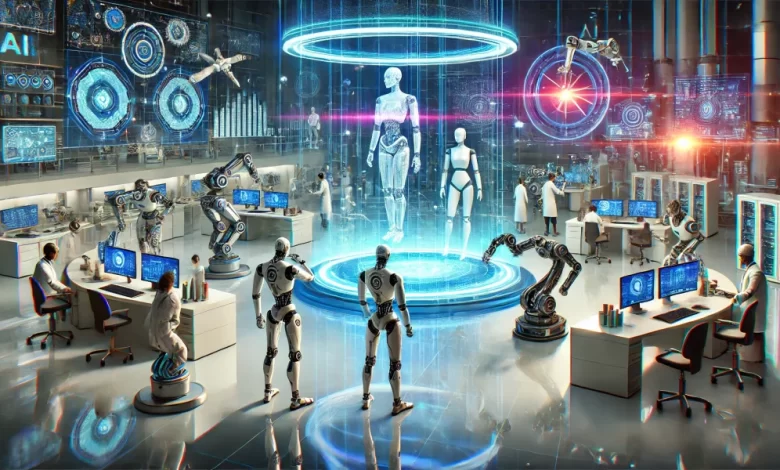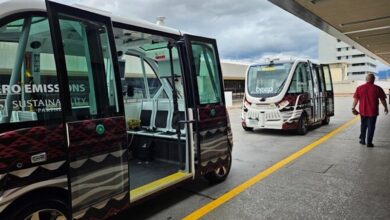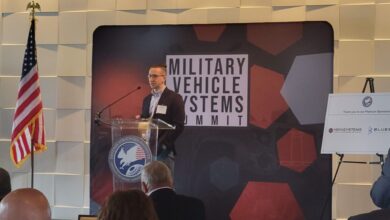Generative AI and Robotics: Are We on the Brink of a Breakthrough?

Imagine a world where robots can compose symphonies, paint masterpieces, and write novels. This fascinating fusion of creativity and automation, powered by Generative AI, is not a dream anymore; it is reshaping our future in significant ways. The convergence of Generative AI and robotics is leading to a paradigm shift with the potential to transform industries ranging from healthcare to entertainment, fundamentally altering how we interact with machines.
Interest in this field is growing rapidly. Universities, research labs, and tech giants are dedicating substantial resources to Generative AI and robotics. A significant increase in investment has accompanied this rise in research. In addition, venture capital firms see the transformative potential of these technologies, leading to massive funding for startups that aim to turn theoretical advancements into practical applications.
Transformative Techniques and Breakthroughs in Generative AI
Generative AI supplements human creativity with the ability to generate realistic images, compose music, or write code. Key techniques in Generative AI include Generative Adversarial Networks (GANs) and Variational Autoencoders (VAEs). GANs operate through a generator, creating data and a discriminator, evaluating authenticity, revolutionizing image synthesis, and data augmentation. GANs gave rise to DALL-E, an AI model that generates images based on textual descriptions.
On the other hand, VAEs are used primarily in unsupervised learning. VAEs encode input data into a lower-dimensional latent space, making them useful for anomaly detection, denoising, and generating novel samples. Another significant advancement is CLIP (Contrastive Language–Image Pretraining). CLIP excels in cross-modal learning by associating images and text and understanding context and semantics across domains. These developments highlight Generative AI’s transformative power, expanding machines’ creative prospects and understanding.
Evolution and Impact of Robotics
The evolution and impact of robotics span decades, with its roots tracing back to 1961 when Unimate, the first industrial robot, revolutionized manufacturing assembly lines. Initially rigid and single-purpose, robots have since transformed into collaborative machines known as cobots. In manufacturing, robots handle tasks like assembling cars, packaging goods, and welding components with extraordinary precision and speed. Their ability to perform repetitive actions or complex assembly processes surpasses human capabilities.
Healthcare has witnessed significant advancements due to robotics. Surgical robots like the Da Vinci Surgical System enable minimally invasive procedures with great precision. These robots tackle surgeries that would challenge human surgeons, reducing patient trauma and faster recovery times. Beyond the operating room, robots play a key role in telemedicine, facilitating remote diagnostics and patient care, thereby improving healthcare accessibility.
Service industries have also embraced robotics. For example, Amazon’s Prime Air‘s delivery drones promise swift and efficient deliveries. These drones navigate complex urban environments, ensuring packages reach customers’ doorsteps promptly. In the healthcare sector, robots are revolutionizing patient care, from assisting in surgeries to providing companionship for the elderly. Likewise, autonomous robots efficiently navigate shelves in warehouses, fulfilling online orders around the clock. They significantly reduce processing and shipping times, streamlining logistics and enhancing efficiency.
The Intersection of Generative AI and Robotics
The intersection of Generative AI and robotics is bringing significant advancements in the capabilities and applications of robots, offering transformative potential across various domains.
One major enhancement in this field is the sim-to-real transfer, a technique where robots are trained extensively in simulated environments before deployment in the real world. This approach allows for rapid and comprehensive training without the risks and costs associated with real-world testing. For instance, OpenAI’s Dactyl robot learned to manipulate a Rubik’s Cube entirely in simulation before successfully performing the task in reality. This process accelerates the development cycle and ensures improved performance under real-world conditions by allowing for extensive experimentation and iteration in a controlled setting.
Another critical enhancement facilitated by Generative AI is data augmentation, where generative models create synthetic training data to overcome challenges associated with acquiring real-world data. This is particularly valuable when collecting sufficient and diverse real-world data is difficult, time-consuming, or expensive. Nvidia represents this approach using generative models to produce varied and realistic training datasets for autonomous vehicles. These generative models simulate various lighting conditions, angles, and object appearances, enriching the training process and enhancing the robustness and versatility of AI systems. These models ensure that AI systems can adapt to various real-world scenarios by continuously generating new and varied datasets, improving their overall reliability and performance.
Real-World Applications of Generative AI in Robotics
The real-world applications of Generative AI in robotics demonstrate the transformative potential of these combined technologies across the domains.
Improving robotic dexterity, navigation, and industrial efficiency are top examples of this intersection. Google’s research on robotic grasping involved training robots with simulation-generated data. This significantly improved their ability to handle objects of various shapes, sizes, and textures, enhancing tasks like sorting and assembly.
Similarly, the MIT Computer Science and Artificial Intelligence Laboratory (CSAIL) developed a system where drones use AI-generated synthetic data to better navigate complex and dynamic spaces, increasing their reliability in real-world applications.
In industrial settings, BMW uses AI to simulate and optimize assembly line layouts and operations, improving productivity, reducing downtime, and improving resource utilization. Robots equipped with these optimized strategies can adapt to changes in production requirements, maintaining high efficiency and flexibility.
Ongoing Research and Future Prospects
Looking to the future, the impact of Generative AI and robotics will likely be profound, with several key areas ready for significant advancements. Ongoing research in Reinforcement Learning (RL) is a key area where robots learn from trial and error to improve their performance. Using RL, robots can autonomously develop complex behaviors and adapt to new tasks. DeepMind’s AlphaGo, which learned to play Go through RL, demonstrates the potential of this approach. Researchers continually explore ways to make RL more efficient and scalable, promising significant improvements in robotic capabilities.
Another exciting area of research is few-shot learning, which enables robots to rapidly adapt to new tasks with minimal training data. For instance, OpenAI’s GPT-3 demonstrates few-shot learning by understanding and performing new tasks with only a few examples. Applying similar techniques to robotics could significantly reduce the time and data required for training robots to perform new tasks.
Hybrid models that combine generative and discriminative approaches are also being developed to enhance the robustness and versatility of robotic systems. Generative models, like GANs, create realistic data samples, while discriminative models classify and interpret these samples. Nvidia’s research on using GANs for realistic robot perception allows robots to better analyze and respond to their environments, improving their functionality in object detection and scene understanding tasks.
Looking further ahead, one critical area of focus is Explainable AI, which aims to make AI decisions transparent and understandable. This transparency is necessary to build trust in AI systems and ensure they are used responsibly. By providing clear explanations of how decisions are made, explainable AI can help mitigate biases and errors, making AI more reliable and ethically sound.
Another important aspect is the development of appropriate human-robot collaboration. As robots become more integrated into everyday life, designing systems that coexist and interact positively with humans is essential. Efforts in this direction aim to ensure that robots can assist in various settings, from homes and workplaces to public spaces, enhancing productivity and quality of life.
Challenges and Ethical Considerations
The integration of Generative AI and robotics faces numerous challenges and ethical considerations. On the technical side, scalability is a significant hurdle. Maintaining efficiency and reliability becomes challenging as these systems are deployed in increasingly complex and large-scale environments. Additionally, the data requirements for training these advanced models pose a challenge. Balancing the quality and quantity of data is critical. In contrast, high-quality data is essential for accurate and robust models. Gathering sufficient data to meet these standards can be resource-intensive and challenging.
Ethical concerns are equally critical for Generative AI and robotics. Bias in training data can lead to biased outcomes, reinforcing existing biases and creating unfair advantages or disadvantages. Addressing these biases is essential for developing equitable AI systems. Furthermore, the potential for job displacement due to automation is a significant social issue. As robots and AI systems take over tasks traditionally performed by humans, there is a need to consider the impact on the workforce and develop strategies to mitigate negative effects, such as retraining programs and creating new job opportunities.
The Bottom Line
In conclusion, the convergence of Generative AI and robotics is transforming industries and daily life, driving advancements in creative applications and industrial efficiency. While significant progress has been made, scalability, data requirements, and ethical concerns persist. Addressing these issues is essential for equitable AI systems and harmonious human-robot collaboration. As ongoing research continues to refine these technologies, the future promises even greater integration of AI and robotics, enhancing our interaction with machines and expanding their potential across diverse fields.




